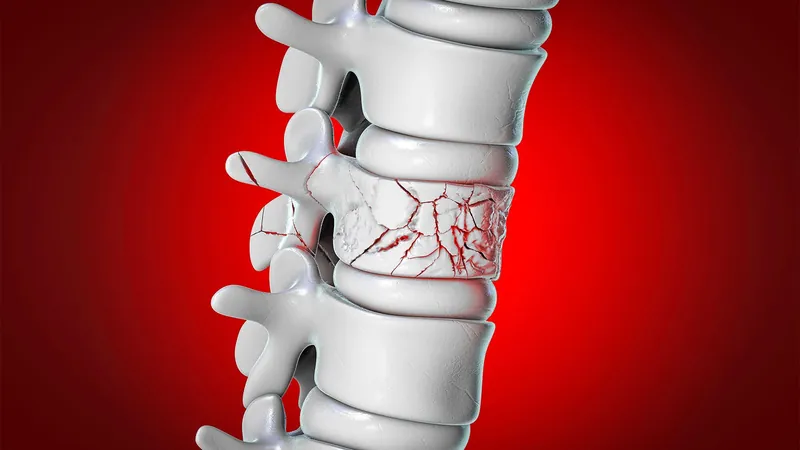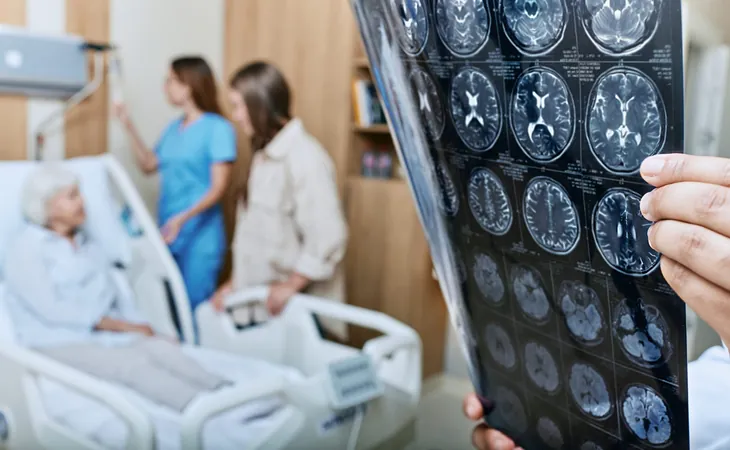
Revolutionary Findings in Osteoporosis Treatment: Infrequent Zoledronate Infusions Cut Vertebral Fractures for Postmenopausal Women!
2025-01-15
Author: Arjun
Groundbreaking Study Overview
In a groundbreaking study published in the New England Journal of Medicine, researchers have unveiled that intravenous zoledronate (commonly known as Reclast) administered only once every five years can significantly reduce vertebral fractures in women soon after menopause. This revelation could change the way osteoporosis is treated and pave the way for a more cost-effective and manageable healthcare strategy.
Study Details and Results
The randomized trial involved over 1,000 postmenopausal women aged between 50 and 60, monitored for a decade. Results showcased that only 6.3% of women who received an initial zoledronate infusion at the start of the study and again at five years experienced new morphometric vertebral fractures. Comparatively, 6.6% of those receiving zoledronate at the start and a placebo at five years and 11.1% of participants who received placebos at both intervals sustained fractures. The relative risk calculations indicated a remarkable efficacy of zoledronate in reducing the incidence of fractures, showcasing a relative risk of 0.56 (with the utmost significance noted, P=0.04) for those receiving two infusions compared to a placebo group.
Addressing a Significant Demographic
The importance of this study cannot be understated. With an average T score indicating normal bone mineral density at baseline, researchers argue that the traditional focus on women with osteoporosis might overlook a significant demographic: those in the early postmenopausal stage who may still benefit immensely from preventative measures. Mark Bolland, the lead author from the University of Auckland, emphasized that the findings might surprise many, showing that a single infusion of zoledronate provides a protection level similar to two infusions spaced five years apart.
Trends in Bone Mineral Density
Experts have long acknowledged a concerning trend: nearly all postmenopausal women experience a gradual decrease in bone mineral density, beginning even before menopause, leading to an average loss of between 0.5% to 1% per year. Administrators of osteoporosis treatments have primarily aimed at those with the gravest levels of bone density loss, typically disregarding the 80% of fractures that occur in women not categorized as having osteoporosis.
Paradigm Shift in Treatment Approach
Commenting on this paradigm shift, Roland Chapurlat, an editorial author and specialist from Université Claude Bernard-Lyon, asserted the findings' significance for primary fracture prevention strategies. He advocated for a broader application of osteoporosis medications to encompass a larger patient pool, illustrating the potential of infrequent doses of generic treatments like zoledronate to curtail overall treatment costs while minimizing side effects.
Preventive Approach for Optimal Outcomes
The researchers also highlighted that a preventive approach would be ideal for women identified as being at low or intermediate risk of fractures—not just after they reach high risk. This is a crucial discussion point for clinicians eager to explore new treatment avenues alongside their patients, rather than adhering to traditional methods that may leave many vulnerable before treatment.
Impact on Bone Mineral Density
The trial's robust design also revealed that the bone mineral density at crucial sites such as the lumbar spine and total hip increased noticeably after the initial infusion of zoledronate, while the placebo group showed a decline. However, those receiving a second infusion saw a stabilization in bone density levels.
Future Research Directions
With a notable completion rate of 95.2% for the study's follow-up, the findings predominantly reflect the experiences of early postmenopausal women lacking osteoporosis. Further research is needed to determine whether these results can be generalized to older populations, men, or individuals already diagnosed with osteoporosis.
Conclusion and Implications for Healthcare
The implications of this study could potentially revolutionize osteoporosis care, offering hope to millions of women navigating the challenges of menopause. As healthcare providers and patients engage in discussions surrounding proactive fracture prevention, the future of bone health management may well be poised for a significant transformation!



 Brasil (PT)
Brasil (PT)
 Canada (EN)
Canada (EN)
 Chile (ES)
Chile (ES)
 Česko (CS)
Česko (CS)
 대한민국 (KO)
대한민국 (KO)
 España (ES)
España (ES)
 France (FR)
France (FR)
 Hong Kong (EN)
Hong Kong (EN)
 Italia (IT)
Italia (IT)
 日本 (JA)
日本 (JA)
 Magyarország (HU)
Magyarország (HU)
 Norge (NO)
Norge (NO)
 Polska (PL)
Polska (PL)
 Schweiz (DE)
Schweiz (DE)
 Singapore (EN)
Singapore (EN)
 Sverige (SV)
Sverige (SV)
 Suomi (FI)
Suomi (FI)
 Türkiye (TR)
Türkiye (TR)
 الإمارات العربية المتحدة (AR)
الإمارات العربية المتحدة (AR)